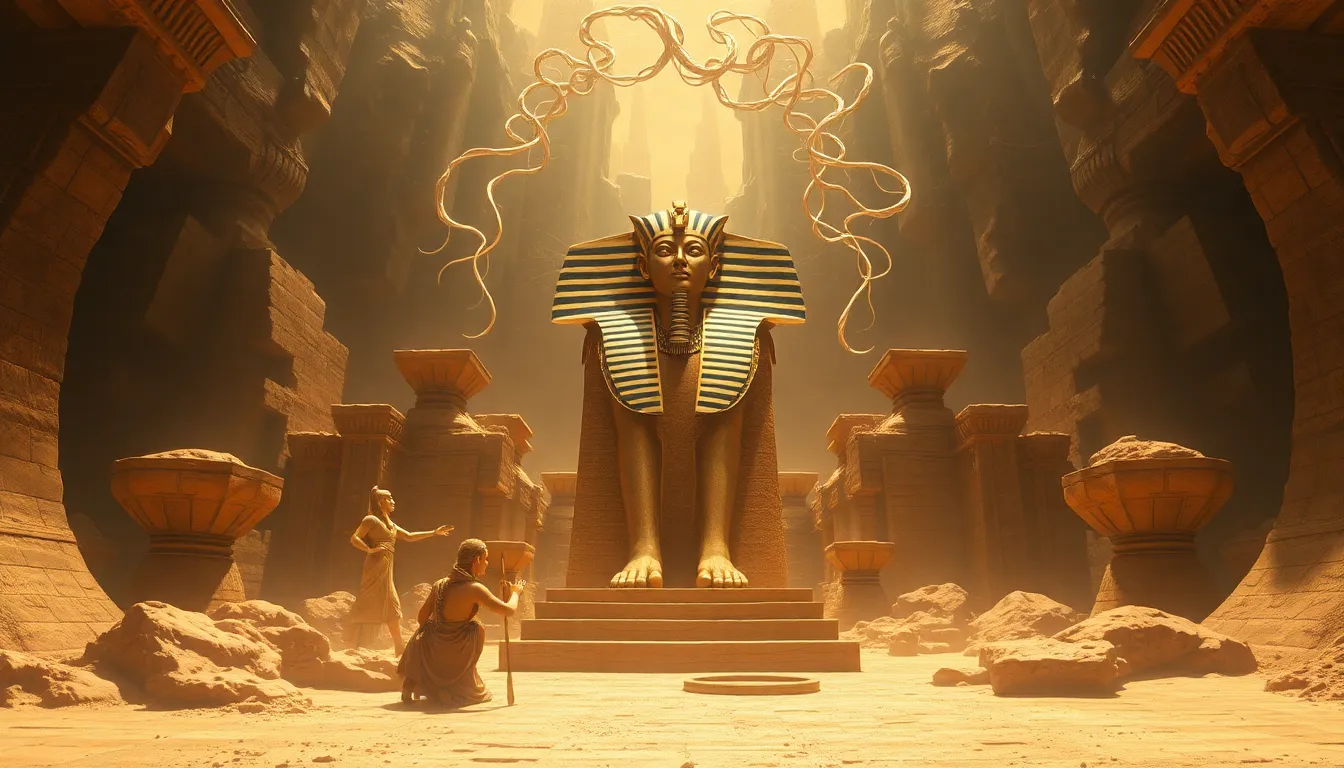The Pharaoh’s Divine Connection to the Underworld
I. Introduction
Ancient Egyptian beliefs were a complex tapestry woven from mythology, spirituality, and the daily lives of its people. Central to these beliefs was the Pharaoh, regarded not only as a ruler but also as a divine figure bridging the earthly realm and the divine. The concept of the underworld, known as Duat, played a pivotal role in the spiritual landscape of Ancient Egypt, particularly concerning the Pharaoh’s journey after death.
II. The Role of the Pharaoh in Ancient Egypt
The Pharaoh held immense political and religious authority, serving as the supreme leader of Egypt. Their role was multifaceted, encompassing various responsibilities that were crucial for the stability and prosperity of the nation.
- Political and religious authority: The Pharaoh was seen as the embodiment of the state, responsible for governance, law, and order.
- Symbol of divine order and Ma’at: The Pharaoh represented Ma’at, the ancient Egyptian concept of truth, balance, and cosmic order, ensuring harmony in the universe.
- The Pharaoh as a mediator between gods and mortals: As a divine intermediary, the Pharaoh communicated the will of the gods to the people and performed rituals to appease them.
III. Egyptian Cosmology and the Underworld
In Egyptian cosmology, the underworld, known as Duat, was a realm where the dead would journey after death. This journey was fraught with challenges and trials, reflecting the belief that the afterlife was as significant as earthly existence.
- Description of Duat: Duat was depicted as a complex landscape filled with rivers, deserts, and various supernatural entities.
- The journey of the soul after death: The deceased would navigate through Duat, encountering obstacles and judgment before reaching the afterlife.
- Importance of the afterlife in Egyptian culture: The afterlife was viewed as a continuation of life on earth, where one could enjoy eternal peace if deemed worthy.
IV. The Pharaoh’s Journey to the Underworld
The Pharaoh’s journey to the underworld was a carefully orchestrated process, involving elaborate rituals and preparations to ensure a successful passage into the afterlife.
- Rituals and preparations for death: The Pharaoh underwent a series of rituals, including the Opening of the Mouth ceremony, to prepare for the afterlife.
- The significance of burial practices and tombs: Tombs were constructed as grand resting places, filled with treasures and items the Pharaoh would need in the afterlife.
- The role of the Book of the Dead in guiding the Pharaoh: This ancient text served as a guide for the deceased, providing spells and instructions to navigate the challenges of Duat.
V. Deities Associated with the Underworld
The Egyptian pantheon included several deities associated with the underworld, each playing a unique role in the journey of the Pharaoh.
- Osiris: The god of the afterlife, Osiris was central to the concept of resurrection and judged the souls of the dead.
- Anubis: The god of mummification and the underworld, Anubis was responsible for guiding souls and overseeing the embalming process.
- Other significant deities: Deities like Ma’at (goddess of truth) and Thoth (god of wisdom) also played crucial roles in the judgment of souls and the maintenance of order in the afterlife.
VI. Symbolism and Artifacts Reflecting the Connection
The connection between the Pharaoh and the underworld is vividly illustrated through various forms of art and artifacts that were created during Ancient Egypt’s long history.
- Iconography in tomb paintings and carvings: Tombs often featured intricate paintings depicting the Pharaoh’s journey in Duat, with scenes of judgment and interaction with deities.
- Artifacts found in burial sites: Items such as sarcophagi, jewelry, and amulets were placed in tombs to accompany the Pharaoh in the afterlife.
- The role of hieroglyphs: Hieroglyphs were used to convey spiritual beliefs and important information about the deceased’s life and their connection to the divine.
VII. The Legacy of the Pharaoh’s Underworld Connection
The fascination with the Pharaoh’s connection to the underworld continues to influence modern interpretations of Ancient Egyptian spirituality and culture.
- Influence on modern interpretations: Contemporary scholars and enthusiasts often explore how these ancient beliefs shape current spiritual practices and concepts of the afterlife.
- The impact of archaeological discoveries: Excavations of tombs and artifacts have unveiled insights into the beliefs surrounding the Pharaoh’s afterlife journey, enriching our understanding of their culture.
- Continuing fascination: The allure of the Pharaohs, their tombs, and their intricate beliefs about the afterlife continues to captivate audiences worldwide.
VIII. Conclusion
The Pharaoh’s divine connection to the underworld is a testament to the rich spiritual tapestry of Ancient Egyptian culture. This connection underscores the importance of the afterlife and the intricate rituals that accompanied the Pharaoh’s journey beyond death. As we reflect on these ancient beliefs, it is clear that they hold enduring significance in contemporary culture, prompting us to explore the mysteries of life, death, and the realms beyond.
Understanding Ancient Egyptian spirituality offers valuable insights into the human experience and our quest for meaning and immortality. The Pharaohs, as both rulers and divine figures, remind us of the profound connections between life and the afterlife, shaping a legacy that continues to resonate through time.




